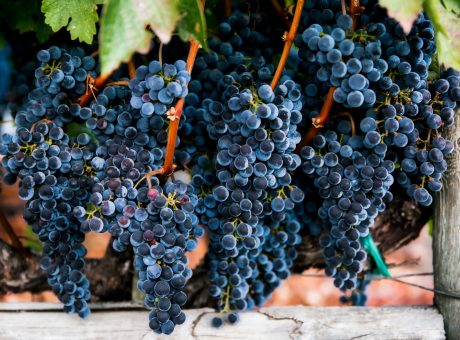Celebrating Harvest Season
Harvest
Harvest is game-on time for every vintner. The growing season has come to its happy conclusion. Skilled vineyard workers cut the clusters off the vine by hand (sometimes machines may be used) and load the grapes into boxes which are carried to waiting gondolas to be received by the wineries. This work often takes place at night or in the early morning hours to insure the grapes arrive at their freshest.
Destemming/Crushing
The gondolas carry the grapes to the sestemmer/crusher—machines which removes the leaves and stems and crush the grapes into a mushy liquid called must. This liquid contains skin, seeds and the juice of the grapes. The skins and seeds are left in because they impart the red hue and tannins to red wines (all wine grapes produce white juice—it’s the skins and seeds which give red wines their color and structure. Stems are removed because they can impart a woody taste.
White wine grapes typically bypass this area and go directly to the press for whole berry pressing because the skins/seeds are not used in the fermentation of white wines.
Fermentation
 After visiting the crusher/destemmer, the must is placed into stainless steel tanks for alcoholic fermentation. These tanks can be tiny (50 gallons) to large (5000 gallons). Here, primary fermentation (the conversion of sugar into alcohol and CO2) takes place.
After visiting the crusher/destemmer, the must is placed into stainless steel tanks for alcoholic fermentation. These tanks can be tiny (50 gallons) to large (5000 gallons). Here, primary fermentation (the conversion of sugar into alcohol and CO2) takes place.
Some white wines are fermented in stainless steel. Others might be fermented in small oak barrels for added complexity and flavor.
Fermentation kicks off with the addition to yeast to the crushed grapes. The yeast eats up the sugar in the grapes and turns it into alcohol. Yummy!
Aging
After fermentation, wine may be placed into oak barrels where it continues to develop before bottling. Sometimes, wines are left in stainless steel to preserve the fresh fruit character of the wine.
Bottling
This is the last stage in the production cycle. Wines are bottled with great attention to quality control and can be sealed with a variety of closures, including natural or man-made cork or screw packs. After wines are bottled, they are usually allowed to settle a bit before shipping to a store near you!












The Winemakers Tour
Great article….love your pictures!
16 . Oct . 2012mary ann
Thank you! Cheers and happy harvest!
16 . Oct . 2012